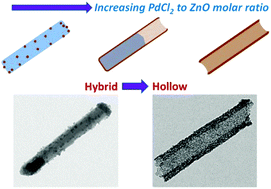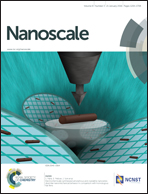Rapid synthesis of hybrids and hollow PdO nanostructures by controlled in situ dissolution of a ZnO nanorod template: insights into the formation mechanism and thermal stability†
Abstract
Hollow nanomaterials have attracted a lot of interest by virtue of their wide range of applications that arise primarily due to their unique architecture. A common strategy to synthesize hollow nanomaterials is by nucleation of the shell material over a preformed core and subsequent dissolution of the core in the second step. Herein an ultrafast, microwave route has been demonstrated, to synthesize PdO nanotubes in a single step using ZnO as a sacrificial template. The mechanism of the nanotube formation has been investigated in detail using control experiments. By tuning the starting ratio of PdCl2 : ZnO, hollow to hybrid PdO nanostructures could be obtained using the same method. Conversion of the PdO to Pd nanotubes has been shown by simple NaBH4 treatment. The thermal stability of the PdO nanotubes has been studied. The insights presented here are general and applicable for the synthesis of hybrids/hollow structures in other systems as well.


 Please wait while we load your content...
Please wait while we load your content...